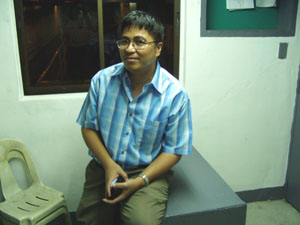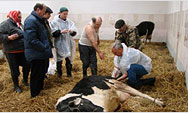You are here » Home » Telling Our Story
Success Story
USAID brings innovative technology to malls, markets and resorts
System Treats Water More Efficiently

Photo: ECO-Asia/Dave Robbins
Through a USAID project, engineer Carlito Santos, Jr., is implementing wastewater treatment systems that use less space, energy and money.
“Even highly commercial establishments want to save on energy. That’s why they’re converting to this system, which is more efficient and less costly to operate,” said engineer Carlito Santos, Jr.
More than 55 Filipinos die every day from waterborne disease, and the country’s high level of biodiversity is threatened because more than 90 percent of the sewage generated is not treated properly.
Because sewage treatment is a critical development priority for the Philippines, USAID has been working with local governments and private companies to develop a low-cost, low maintenance technology for sewage treatment.
Among the innovations USAID is introducing is the sequencing batch reactor technology, which takes up less space and uses less energy than conventional sewage treatment systems. Instead of requiring separate tanks for each step in the wastewater treatment process, this system uses one tank for all the steps. In addition, the system requires only intermittent use of the air blowers (which inject oxygen into the water, helping the microorganism to multiply and eliminate bacteria in the wastewater). By not using the air blowers continuously, as other methods require, this system saves electricity and money.
Because of its cost-effectiveness and practical local application, USAID introduced the technology into public markets and slaughterhouses across the Philippines. For example, the Muntinlupa City Public Market became the first public market in the Philippines to reuse its treated effluent for toilet flushing and street washing, reducing the need to pump groundwater and lowering its electricity bill. The Mall of Asia in Metro Manila, one of the largest malls in Asia, is using this system. In addition, USAID is promoting the system’s use in high-end resorts, including Plantation Bay in Cebu and El Nido in Palawan.
“With this cost effective and easy-to-maintain technology, resorts, public markets and big malls are now able to save from 30 to 40 percent in operation costs with the new treatment system and are beginning to see the wastewater itself as a resource,” said Carlito Santos, Jr., an engineer working on the project.
Print-friendly version of this page (533kb - PDF)
Click here for high-res photo
Back to Top ^
|




